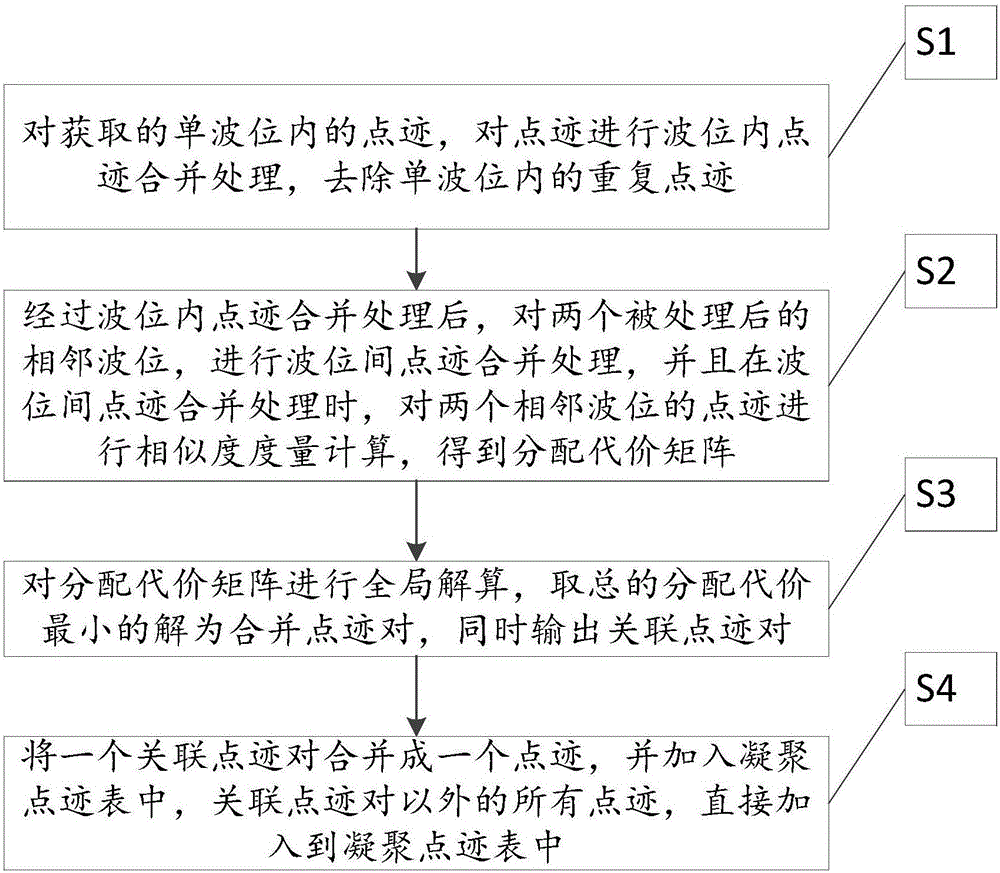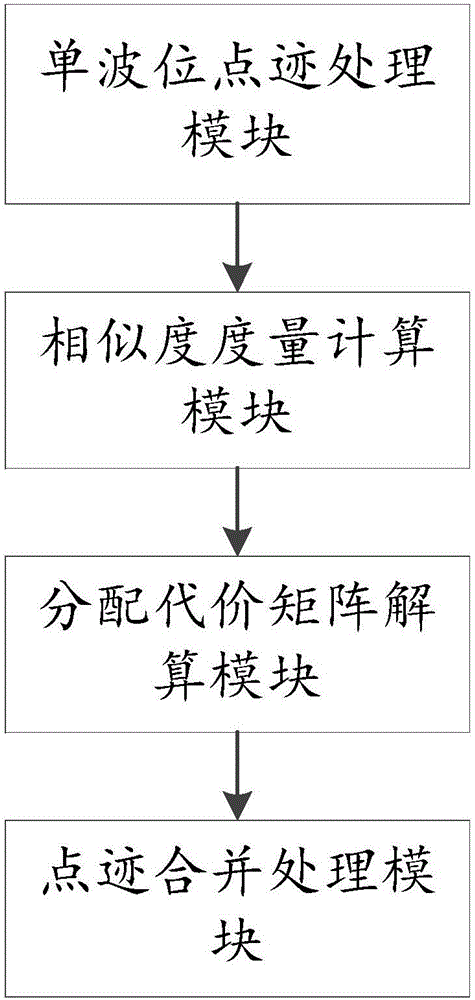Global nearest neighbor method-based method and system for merging trace points between beam positions
A nearest neighbor, point trace technology, applied in the field of radar detection, can solve problems such as point trace merging, etc., to achieve the effect of improving the accuracy rate, improving the efficiency of point trace merging, and improving the accuracy rate of point trace merging.
- Summary
- Abstract
- Description
- Claims
- Application Information
AI Technical Summary
Problems solved by technology
Method used
Image
Examples
Embodiment 1
[0030] Such as figure 1 Shown, a kind of method of the present invention is based on the method for merging point traces between wave positions of global nearest neighbor method, and this method comprises the following steps:
[0031] S1, for the dot traces in the acquired single-wave position, perform a merging process on the dot traces in the wave position, and remove repeated dot traces in the single-wave position;
[0032] Preferably, the obtained single-wave internal traces are processed, and the traces within a certain correlation threshold are combined to remove repeated traces in the echo, so that single-wave reliable points can be obtained Trace, which is beneficial to improve the accuracy of point-trace merging between waves.
[0033] S2. After the merging of traces within wave positions, the merging of traces between wave positions is performed on the two processed adjacent wave positions, and when the merging of traces between wave positions is performed, the two ...
PUM
 Login to View More
Login to View More Abstract
Description
Claims
Application Information
 Login to View More
Login to View More - R&D
- Intellectual Property
- Life Sciences
- Materials
- Tech Scout
- Unparalleled Data Quality
- Higher Quality Content
- 60% Fewer Hallucinations
Browse by: Latest US Patents, China's latest patents, Technical Efficacy Thesaurus, Application Domain, Technology Topic, Popular Technical Reports.
© 2025 PatSnap. All rights reserved.Legal|Privacy policy|Modern Slavery Act Transparency Statement|Sitemap|About US| Contact US: help@patsnap.com



